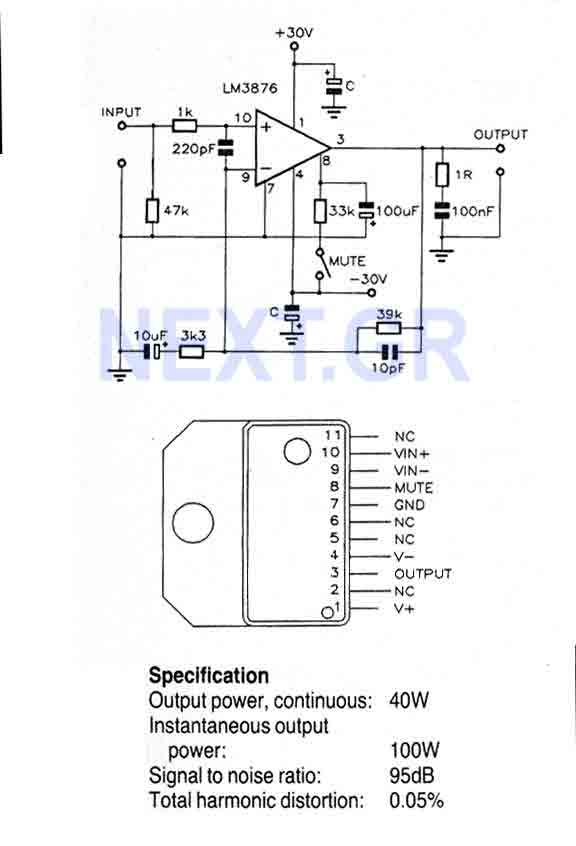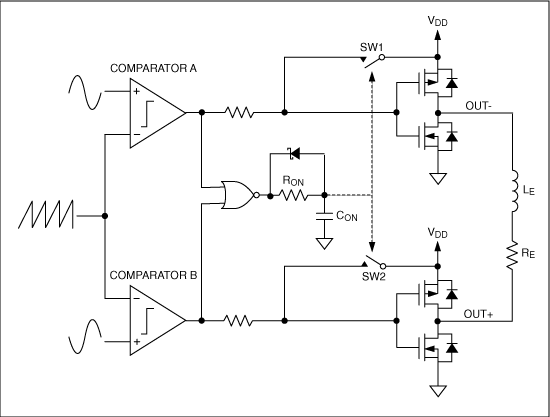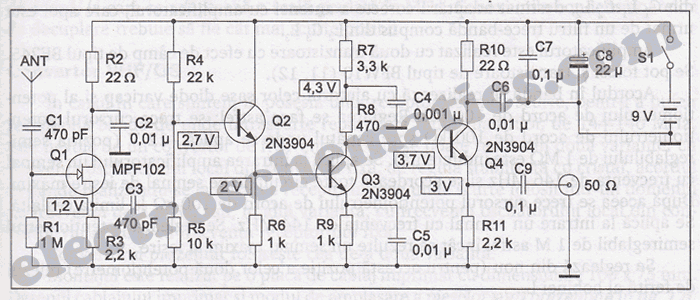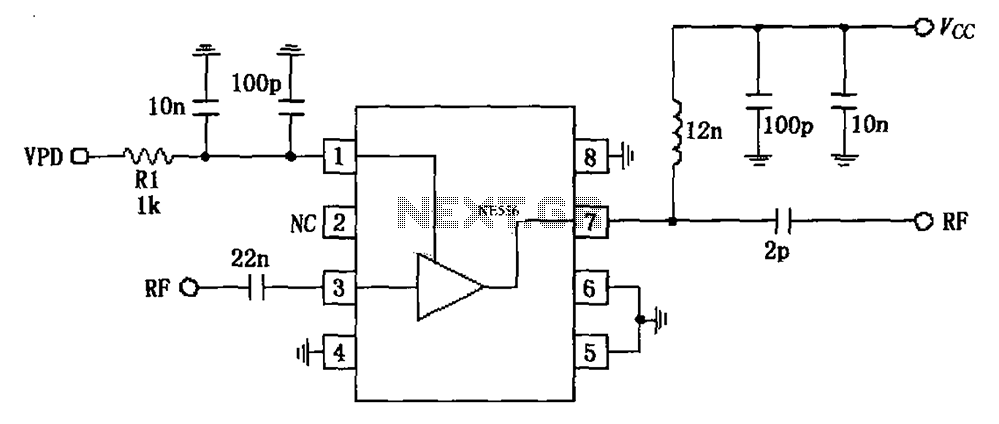
VHF-UHF Antenna Amplifier (Booster) 40-500MHz
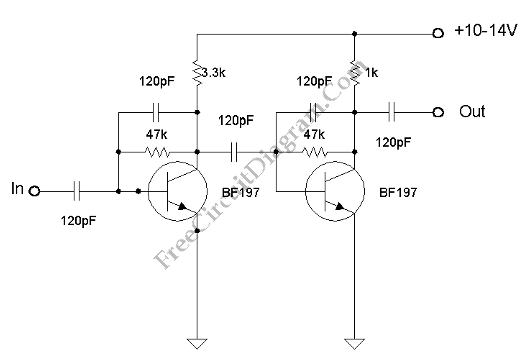
This amplifier has VHF (very high frequency) and UHF (ultra high frequency) response, and it can be used as a receiver booster, for example. Here is the schematic.
The described amplifier is designed to enhance signal reception in the VHF and UHF frequency ranges, making it suitable for applications such as television and radio signal amplification. The amplifier circuit typically consists of several key components: a transistor or operational amplifier, resistors, capacitors, and possibly inductors, which work together to boost the incoming signals.
In the schematic, the input stage often includes a matching network to optimize the impedance between the antenna and the amplifier, ensuring maximum power transfer and minimal signal loss. The amplifier stage is usually configured for gain, where the transistor or operational amplifier is biased to operate in its linear region, allowing it to amplify the weak signals received from the antenna.
Feedback mechanisms may be implemented to stabilize the gain and reduce distortion, while bypass and coupling capacitors are strategically placed to filter out unwanted frequencies and allow only the desired VHF and UHF signals to pass through. The output stage of the amplifier may include additional filtering to further refine the signal before it is sent to the receiver.
Power supply considerations are critical, as the amplifier must be powered adequately to ensure optimal performance. Depending on the design, the amplifier may operate on a single or dual power supply, with decoupling capacitors used to minimize noise from the power source.
Overall, this amplifier design is a vital component in enhancing the performance of VHF and UHF receivers, contributing to improved signal clarity and reception range.This amplifier has VHF (very high frequency) and UHF (ultra high frequency) response, you can use it for receiver booster for example. Here is the schematic. 🔗 External reference
The described amplifier is designed to enhance signal reception in the VHF and UHF frequency ranges, making it suitable for applications such as television and radio signal amplification. The amplifier circuit typically consists of several key components: a transistor or operational amplifier, resistors, capacitors, and possibly inductors, which work together to boost the incoming signals.
In the schematic, the input stage often includes a matching network to optimize the impedance between the antenna and the amplifier, ensuring maximum power transfer and minimal signal loss. The amplifier stage is usually configured for gain, where the transistor or operational amplifier is biased to operate in its linear region, allowing it to amplify the weak signals received from the antenna.
Feedback mechanisms may be implemented to stabilize the gain and reduce distortion, while bypass and coupling capacitors are strategically placed to filter out unwanted frequencies and allow only the desired VHF and UHF signals to pass through. The output stage of the amplifier may include additional filtering to further refine the signal before it is sent to the receiver.
Power supply considerations are critical, as the amplifier must be powered adequately to ensure optimal performance. Depending on the design, the amplifier may operate on a single or dual power supply, with decoupling capacitors used to minimize noise from the power source.
Overall, this amplifier design is a vital component in enhancing the performance of VHF and UHF receivers, contributing to improved signal clarity and reception range.This amplifier has VHF (very high frequency) and UHF (ultra high frequency) response, you can use it for receiver booster for example. Here is the schematic. 🔗 External reference
